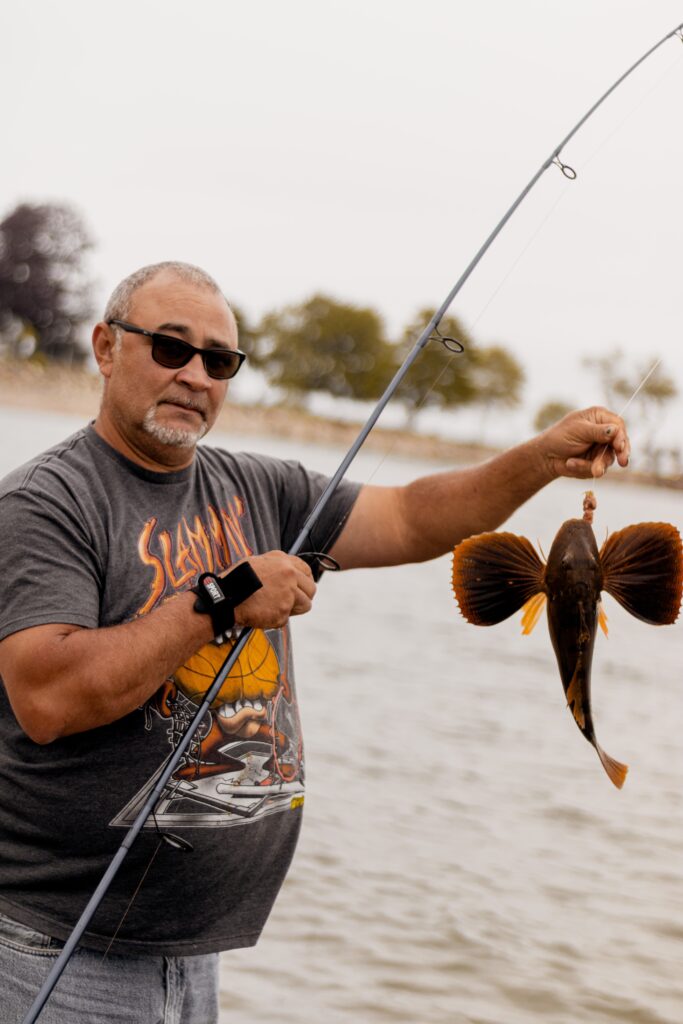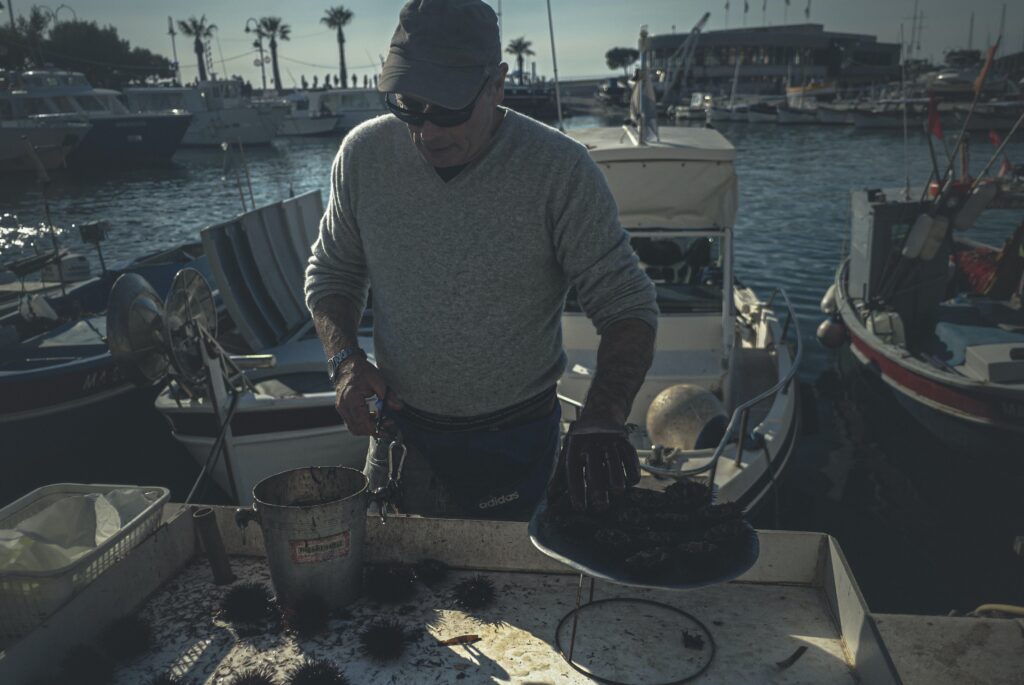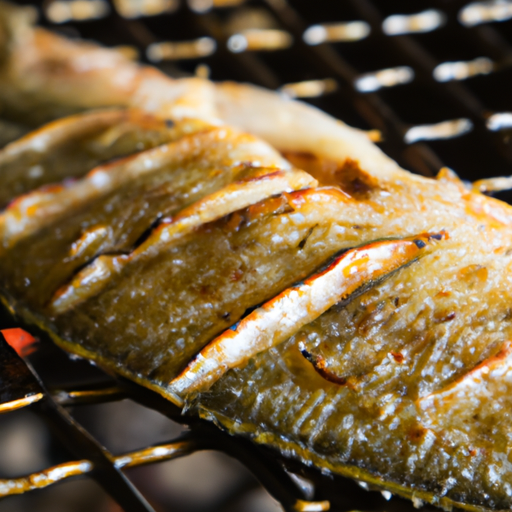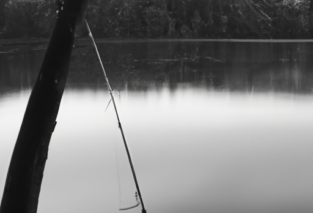So, you’ve just returned from a weekend of fishing, and you’re staring at your fresh catch, wondering what to do next. Whether you’re new to cooking or just haven’t had much experience with seafood, fear not! The “Beginner’s Guide to Cooking and Grilling Your Fresh Catch” is here to help you become a culinary pro in no time. This comprehensive guide will walk you through everything you need to know, from selecting the perfect fish to mastering different cooking techniques and creating delicious meals that will impress even the toughest critics. Get ready to embark on a flavorful adventure with your fresh catch and amaze your friends and family with your newfound cooking skills.
Selecting the Right Fish
Choosing the Freshest Fish
When it comes to cooking fish, selecting the freshest catch is crucial to ensure a delicious and flavorful meal. So, how do you choose the freshest fish? Start by using your senses! Look for clear and bright eyes, shiny and vibrant skin, and flesh that springs back when touched. The fish should not have a strong fishy smell; instead, it should have a fresh ocean scent. Trust your instincts, and if something seems off, it’s best to pass on that particular fish.
Considering the Flavor and Texture
Apart from freshness, considering the flavor and texture of the fish is equally important. Different fish species have varying taste profiles and textures that work better with certain cooking techniques. For example, white fish like cod or snapper have a mild flavor and flaky texture, making them ideal for grilling or baking. On the other hand, oily fish like salmon or mackerel have a rich flavor and firmer texture, perfect for pan-frying or roasting. Take some time to research and experiment with different fish to find your favorites.
Sustainable Fishing Practices
While selecting your fish, it’s crucial to make environmentally conscious choices. Opt for fish that are sustainably sourced, as this helps to protect the delicate ecosystems and ensures that future generations can continue to enjoy seafood. Look for labels such as MSC (Marine Stewardship Council) or ASC (Aquaculture Stewardship Council) on the packaging, which indicate that the fish has been responsibly caught or farmed. By choosing sustainably sourced fish, you can enjoy your meal guilt-free, knowing that you are supporting sustainable fishing practices.
Cleaning and Preparing the Fish
Gutting and Scaling the Fish
Once you have selected your fresh catch, it’s time to clean and prepare it for cooking. Start by gutting the fish to remove the internal organs. Make a shallow cut along the belly and gently scoop out the insides with a spoon or your fingers. After gutting, it’s essential to scale the fish to remove the protective layer of scales. Use a fish scaler or the back of a knife to scrape the scales away from the tail towards the head. Rinse the fish thoroughly under cold water to remove any remaining scales or residue.
Removing the Gills and Fins
After gutting and scaling, it’s time to remove the gills and fins. To remove the gills, make a small incision perpendicular to the fish’s body, just behind the gill plate. Gently pull out the gills and discard them. Next, use a sharp knife or kitchen shears to trim off the fins. Be careful and take your time during this process to avoid any accidental cuts. Removing the gills and fins not only enhances the appearance of the fish but also makes it easier to handle during cooking.
Filleting or Leaving Whole
The final step in cleaning and preparing your fish is deciding whether to fillet it or cook it whole. Filleting involves carefully removing the flesh from the bones, resulting in boneless fish fillets. This is a popular option for grilling, baking, or pan-frying. If you prefer to cook the fish whole, you can stuff it with herbs and spices and grill or roast it. Cooking the fish whole can provide a visually stunning presentation and intensify the flavors, but be sure to adjust the cooking time accordingly to ensure even cooking.

Marinating and Seasoning
Creating a Flavorful Marinade
Marinating the fish can enhance its flavor and add an extra dimension to your dish. A simple marinade can be made by combining olive oil, citrus juice (such as lemon or lime), minced garlic, and your choice of herbs and spices. The acid in the citrus juice helps to tenderize the fish while infusing it with tangy flavors. Allow the fish to marinate in the refrigerator for at least 30 minutes or up to a few hours, depending on the type and thickness of the fish. Avoid marinating for too long to prevent the fish from becoming mushy.
Properly Seasoning the Fish
Seasoning the fish is crucial to bring out its natural flavors. Before cooking, sprinkle both sides of the fish with salt and pepper to taste. You can also experiment with other seasonings, such as paprika, cayenne pepper, or herbs like dill or thyme. The key is to strike a balance between enhancing the fish’s taste and not overpowering it with too many strong flavors. Remember, you can always add more seasoning later if needed, so start with a conservative amount and adjust to your preference.
Grilling Techniques
Choosing the Right Grill
Grilling fish is a fantastic way to showcase its flavors and give it a delicious smoky char. When it comes to grills, you have several options to choose from. Gas grills offer convenience and precise temperature control, making them ideal for beginners. Charcoal grills provide a more traditional grilling experience, imparting a distinctive smoky flavor to the fish. Electric grills are suitable for indoor use and provide a convenient option for those lacking outdoor space. Consider your needs and preferences when selecting the right grill for your fish cooking adventures.
Preheating and Cleaning the Grill
Before grilling your fish, it’s essential to preheat the grill to the desired temperature. Preheating ensures that the fish cooks evenly and prevents it from sticking to the grates. For gas grills, preheat on high for about 10-15 minutes. For charcoal grills, allow the coals to burn until they are covered in white ash before placing the fish on the grill. While preheating, take the time to clean the grill grates with a stiff brush to remove any residue or food particles from previous cookouts. A clean grill not only prevents sticking but also promotes better heat distribution.
Direct Heat vs. Indirect Heat
When grilling fish, you can choose between direct heat and indirect heat grilling methods. Direct heat involves placing the fish directly over the heat source, resulting in faster cooking and a delightful sear. This method works well for thinner fillets or small whole fish. Indirect heat involves positioning the fish away from the heat source, allowing it to cook more slowly and evenly. This method is better suited for thicker fillets or larger whole fish. Experiment with both methods to find the one that suits your preference and the specific type of fish you are cooking.
Using Foil or Cedar Planks
Using foil or cedar planks adds another layer of flavor and helps to protect the delicate fish from direct heat. For foil grilling, place the marinated fish on a sheet of heavy-duty aluminum foil, folding up the edges to create a shallow bowl. This method is excellent for cooking delicate fish or preventing smaller fillets from falling through the grates. Cedar planks, on the other hand, infuse the fish with a smoky, woodsy flavor. Soak the cedar plank in water for at least 30 minutes, then place the fish on top and grill it to perfection.

Grilling Tips and Tricks
Oil the Fish and Grill Grates
To prevent the fish from sticking to the grill grates, it’s essential to oil both the fish and the grates. Brush a thin layer of cooking oil, such as vegetable oil or olive oil, onto the fish before placing it on the grill. This creates a barrier between the fish and the grates, making it easier to flip and preventing it from tearing. Additionally, oiling the grates helps to reduce sticking. Take a folded piece of paper towel soaked in oil and, using tongs, rub it across the grates just before placing the fish on the grill.
Cooking Time and Temperature
Proper timing and temperature are crucial for perfectly grilled fish. Remember that fish cooks quickly, so keep a close eye on it. As a general guide, cook fish for about 8-10 minutes per inch of thickness. For fillets, aim for an internal temperature of 145°F (63°C) or until the flesh becomes opaque and flakes easily with a fork. For whole fish, check the internal temperature near the backbone. It should reach 145°F (63°C) as well. Undercooked fish may appear translucent and have a mushy texture, while overcooked fish can become dry and lose its natural moisture.
Using a Thermometer
To ensure that your fish is cooked to perfection, using a meat thermometer can be a game-changer. Insert the thermometer probe into the thickest part of the fish, avoiding contact with any bones. The internal temperature should read 145°F (63°C) for safe consumption. If you don’t have a meat thermometer, you can use visual cues to determine doneness. The flesh should appear opaque and easily separate into flakes without any translucent areas. With practice, you will become more confident in judging doneness by sight and touch.
Flipping and Turning the Fish
When grilling fish, it’s important to handle it with care to prevent it from falling apart or sticking. Use a fish spatula or tongs to gently flip the fish once during the cooking process. If the fish is sticking to the grates, it may not be ready to flip yet. Give it another minute or two, and it should release more easily. Avoid constantly flipping or turning the fish, as this can lead to uneven cooking. If using cedar planks or foil, flipping may not be necessary since the fish cooks in a more protected environment.
Cooking Techniques
Choosing the Right Cooking Method
Grilling is not the only way to cook fish. Depending on the type of fish and your personal preference, there are various cooking methods to choose from. Pan-frying is a versatile method that works well with thinner fillets, resulting in a crispy exterior and tender interior. Searing is a high-heat method that creates an irresistible crust on the fish while leaving the center moist and flaky. Baking and roasting are suitable for larger fillets or whole fish, allowing for a more even and controlled cooking process. Steaming and poaching are gentle methods that preserve the delicate flavor and texture of the fish.
Pan-Frying and Searing
To pan-fry fish, heat a small amount of oil in a skillet over medium-high heat. Place the fish in the skillet, presentation side down, and cook for a few minutes until the underside turns golden brown. Carefully flip the fish and cook for an additional few minutes until it reaches the desired doneness. For searing, preheat a cast-iron skillet over high heat until it is smoking hot. Add a small amount of oil and place the fish in the skillet, cooking for a short time on each side to achieve a caramelized crust.
Baking and Roasting
Baking and roasting are great cooking methods for larger fillets or whole fish. Preheat your oven to the desired temperature and place the fish in a greased baking dish or on a baking sheet lined with parchment paper. Season the fish with your favorite herbs and spices, and drizzle a little oil or melted butter over the top to keep it moist. Bake or roast the fish until it is cooked through and flakes easily with a fork. This method allows for even cooking and can be easily adjusted to accommodate different fish sizes and thicknesses.
Steaming and Poaching
Steaming and poaching are gentle and healthy cooking methods that produce moist and flavorful fish. To steam the fish, fill a pot with a few inches of water and bring it to a simmer. Place the fish in a bamboo or metal steamer basket and set it over the pot, ensuring that the water does not touch the fish. Cover and steam for a few minutes until the fish turns opaque and flakes easily. For poaching, gently simmer the fish in a flavorful liquid, such as fish stock or white wine infused with herbs and spices. This method allows the fish to cook gently and absorb the aromatic flavors.

Cooking Tips and Tricks
Using the Correct Cooking Oil
Choosing the correct cooking oil is crucial for achieving the best results when cooking fish. Oils with a high smoke point, such as vegetable oil, canola oil, or peanut oil, are ideal for high-heat cooking methods like frying, searing, or grilling. These oils can withstand the high temperatures without breaking down or producing smoke. For baking, roasting, or other low-heat cooking methods, using oils with a milder flavor, such as olive oil or melted butter, can add richness to the fish without overpowering its natural taste.
Monitoring Cooking Time
Fish cooks quickly, so it’s important to keep a close eye on the cooking time. Set a timer or use the clock on your stove to track the minutes. Overcooked fish can become dry and lose its delicate flavors, while undercooked fish may not be safe to consume. Each cooking method and fish type may require different cooking times, so refer to recipes or general guidelines to ensure you cook your fish to perfection. With practice, you will become more familiar with the cooking times needed for different dishes.
Checking for Doneness
Visual cues can help determine the doneness of your fish. Look for opaque flesh that easily flakes apart when gently pressed with a fork. The fish should no longer appear translucent or raw in the thickest part. If you’re unsure, use a knife to gently pry open a fillet to check the interior. It should be moist and slightly translucent, but not raw. Remember that residual heat will continue to cook the fish even after removing it from the heat source, so it’s better to slightly undercook it and let it rest before serving.
Resting and Serving the Fish
Resting the fish for a few minutes after cooking allows the flavors to settle and the juices to redistribute, resulting in a more tender and flavorful meal. Transfer the cooked fish to a warm plate or cutting board and tent it loosely with foil to keep it warm. Let it rest for about 5 minutes before serving. During this time, you can prepare any accompanying side dishes or sauces. Serve the fish with confidence, knowing that you have cooked and rested it to perfection.
Pairing with Side Dishes
Selecting Complementary Ingredients
Pairing your cooked fish with the right side dishes can elevate the overall dining experience. Consider the flavors and textures of the fish when choosing side dishes. For example, a light and flaky white fish pairs well with citrusy salads or roasted vegetables. Rich and flavorful salmon can be complemented by a nutty quinoa or a creamy risotto. Experiment with different combinations to discover your favorite flavor pairings. Don’t forget to consider contrasting textures as well, such as pairing a crispy fish with a creamy coleslaw.
Grains, Vegetables, or Salad
Grains, vegetables, and salads can provide a balanced and nutritious accompaniment to your fish. Consider serving fish over a bed of cooked grains like rice, quinoa, or couscous to add substance to the meal. Roasted or grilled vegetables, such as asparagus, zucchini, or sweet potatoes, can offer vibrant colors and flavors. Light and refreshing salads, like a citrusy arugula salad or a classic Caesar salad, can provide a crisp contrast to the richness of the fish. Be creative and try different combinations until you find the perfect side dish for your fish.
Sauces and Condiments
Sauces and condiments can add an extra layer of flavor and excitement to your fish dish. Tartar sauce, made from mayonnaise, pickles, and herbs, pairs well with fried or grilled fish. Lemon butter sauce, made by melting butter with fresh lemon juice and zest, can enhance the natural flavors of the fish. For a spicy kick, try a mango salsa or a chili-lime sauce. If you prefer a lighter touch, a simple drizzle of extra-virgin olive oil or a squeeze of fresh lemon or lime can provide a refreshing finishing touch to your cooked fish.

Presentation and Garnishing
Arranging the Fish on a Plate
Presentation plays a vital role in elevating the dining experience. When plating your cooked fish, take the time to arrange it in an appealing manner. Place the fish fillets or whole fish attractively on the plate, allowing the vibrant colors and textures to shine through. Consider pairing different types of fish or cuts to create an eye-catching display. If serving fillets, you can slightly overlap them or stack them elegantly. Pay attention to the overall aesthetics, ensuring that the fish is the main focal point of the dish.
Garnishing with Fresh Herbs
Fresh herbs can add a burst of color, fragrance, and flavor to your cooked fish. Consider garnishing the dish with a sprinkle of chopped herbs such as parsley, dill, cilantro, or basil. These herbs not only provide visual appeal but also complement the natural flavors of the fish. Experiment with different herbs and combinations to find the ones that best enhance the specific fish and cooking method you have chosen. Remember, you can always taste the herbs individually before adding them to your dish to ensure they complement the flavors.
Adding a Squeeze of Lime or Lemon
A final touch to elevate the flavors of your cooked fish is a squeeze of fresh lime or lemon. The bright acidity of citrus fruits can enhance the natural taste of the fish and provide a refreshing contrast. Just before serving, squeeze a wedge of lime or lemon over the fish, allowing the tangy juice to mingle with the delicate flavors. The citrus juice can also cut through any richness or oily residue, balancing the overall taste of the dish. Be generous with the squeeze, adjusting the amount to your personal preference.
Storing and Reheating Leftovers
Properly Storing Cooked Fish
If you find yourself with any leftover cooked fish, it’s important to store it properly to maintain its quality and prevent spoilage. Allow the fish to cool completely before transferring it to an airtight container or wrapping it tightly in plastic wrap. Place the container in the refrigerator and consume the fish within 2-3 days. Always use clean utensils and avoid cross-contamination with other foods to preserve the flavor and quality. Alternatively, you can freeze the leftover fish for up to 2-3 months, ensuring it is well wrapped to prevent freezer burn.
Reheating Techniques
When reheating cooked fish, gentle methods are preferred to prevent the fish from becoming dry or overcooking. Consider the cooking method used initially and choose a reheating technique accordingly. For grilled fish, quickly reheat it on a hot grill or grill pan for a few minutes on each side to regain the smoky char. For baked or roasted fish, place it in a preheated oven at a moderate temperature until it is warmed through. To reheat pan-fried or seared fish, use a non-stick skillet over low heat, adding a little oil or butter to help retain moisture. Be mindful not to overheat the fish, as this can affect its texture and taste.
By following this comprehensive guide, you are well-equipped to embark on your cooking and grilling adventures with fresh fish. Remember to select the freshest catch, experiment with flavors and cooking techniques, and pay attention to every detail, from marinating to presentation. With practice, you will gain confidence in preparing and grilling fish to perfection, creating delicious and memorable meals for yourself and your loved ones. So, grab your apron, fire up the grill, and enjoy the flavors of the ocean in the comfort of your own home!






